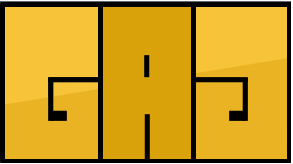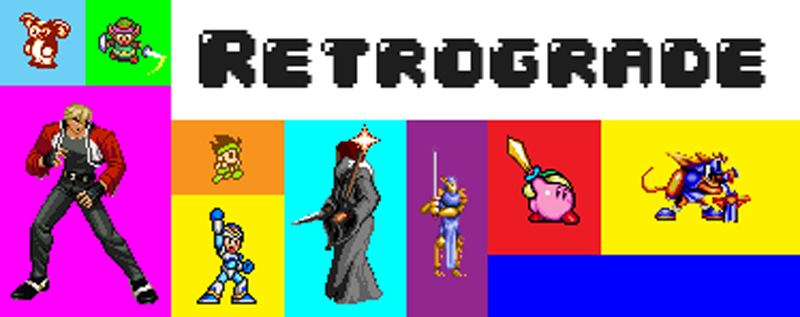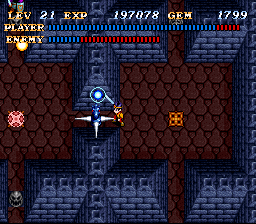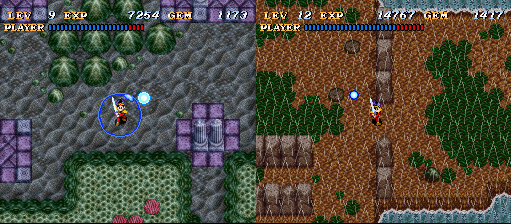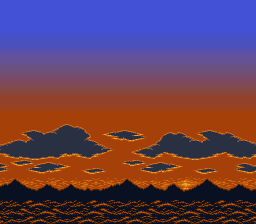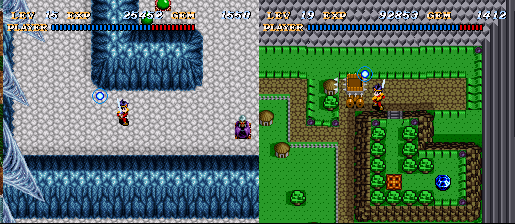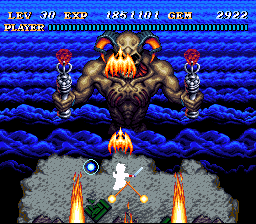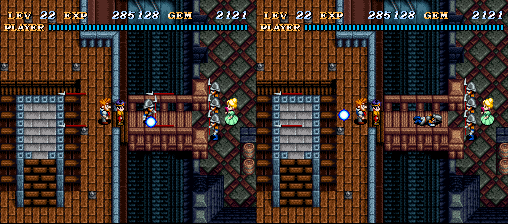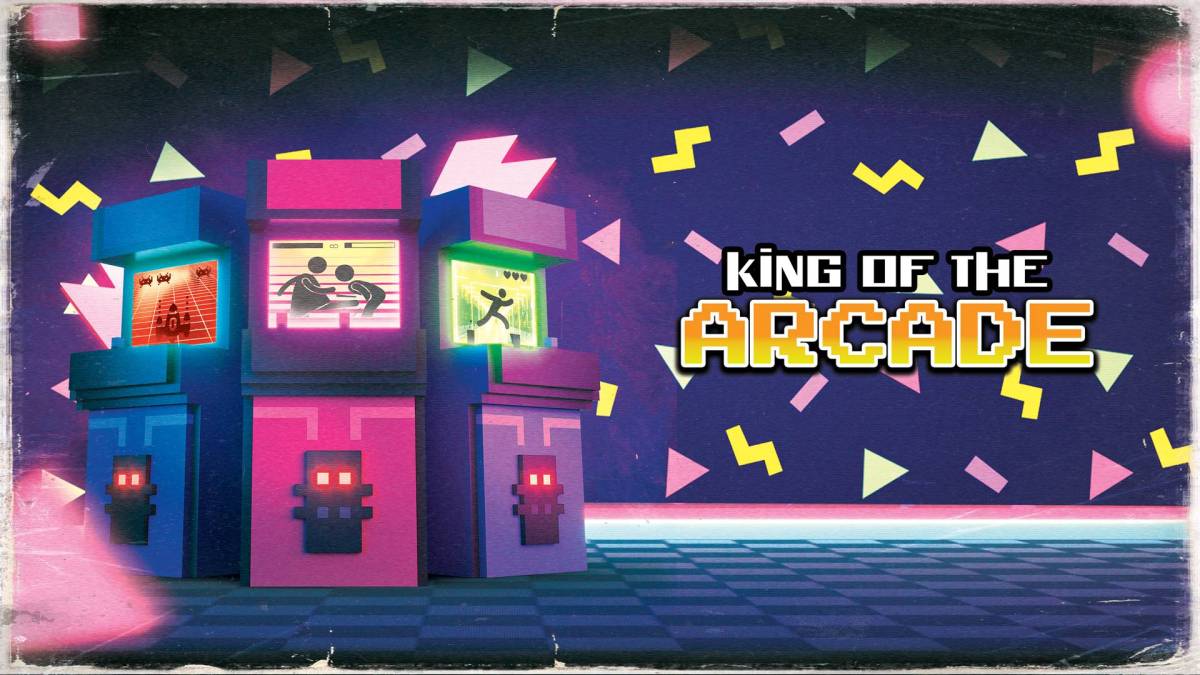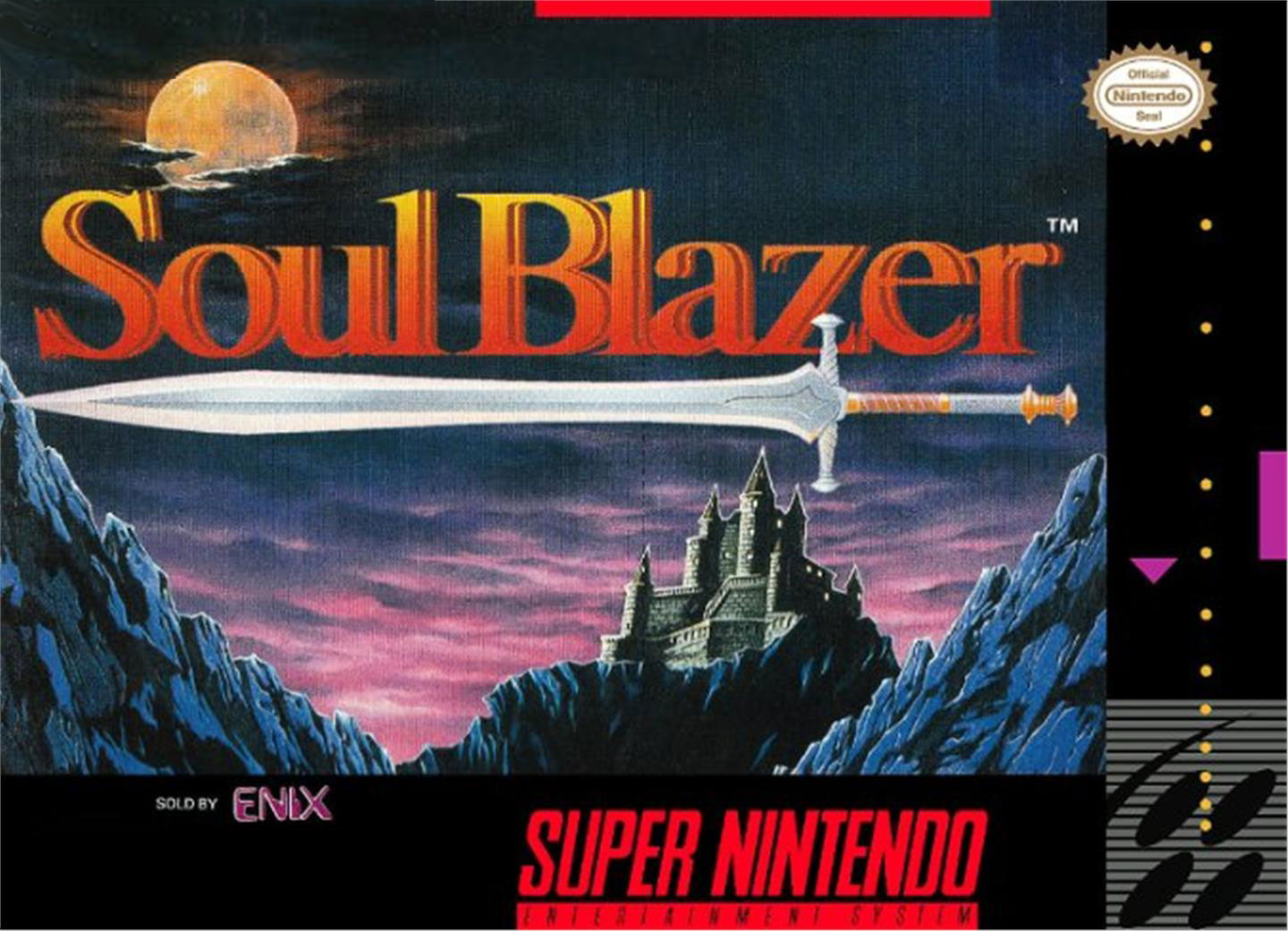
Platform: SNES
Soul Blazer is an action RPG that was released back in 1992 on the Super Nintendo. Not exactly a genre the SNES was drowning in at the time, but with the benefit of being 20-plus years in the future, there’s certainly a lot of other games of its ilk you can pick from on the platform that have aged better. At a glance, it doesn’t do much in the way to separate itself from the rest of the pack. Unless you start thinking about what the story is trying to convey beyond the simplistic dialogue, there really isn’t much to remember fondly. I might be being a bit harsh without really explaining why, so let’s start out with that.
The premise of the game is fairly simple. You’re the disciple of a deity of some sort. A king has made a literal deal with the devil to make himself rich. In exchange for each soul the king brings to him, Deathtoll, the aforementioned devil, will exchange it for a piece of gold. In his greed, the king effectively wipes out all life on the planet, and you’re sent by your master to restore the world to its former state. As you head to Earth (?), you’ll find the starting area devoid of life. To restore it, you go into the dungeon attached to that area, defeat the enemies that spawn from a seal, and then walk onto the seal to either open the dungeon further or set free a resident from that area. Nothing terribly deep on the surface, but it does surprise a bit if you’re willing to dig a bit deeper and pay attention to some of the more subtle goings-on with the characters you free.
Combat is fairly simple and there really isn’t much in the way of depth to it. You swing a sword out that has a fairly wide arc that’s capable of hitting outside of what should be its obvious hitbox, allowing you some easy kills in certain spots of the game. You also have a spirit that will circle around you that’s the point from where all of your magic spells come from. It’s a bit of a strange design choice, as you have to wait for it to circle around to an area that the selected spell would be effective when cast, making magic a less than snappy combat choice. Your ability to cast magic is also regulated to gems, something defeated enemies will drop. While you won’t find yourself in any huge short supply of them, you’ll find your gem supply wiped out if your hit points drop to zero. Having that thought in the back of my mind kept me hoarding my gems in case I needed them. By the end of the game, I had so many that I almost couldn’t hope to use them all if I tried.
You get new armor that adds to your durability and adds effects to your hero. Some will simply do things like cut the necessary gems used when using magic, while others will allow you to traverse certain areas that might otherwise cause damage. Finding new swords as you progress will not only be stronger than your previous one but add abilities to your attacks. The two most important ones enable you to defeat enemies that are otherwise impervious to your attacks, allowing you to unlock seals that in previous areas you had to leave unopened. Once you get these swords, it adds to one of Soul Blazer’s biggest flaws – backtracking.
A lot of games in this genre will have you doing a fair amount of backtracking. It’s not that I mind backtracking. One of my favorite genres is the exploratory platformer, so I’d be hard-pressed to really criticize the foundation of that genre. It’s just such a hard thing to implement correctly, that when it’s not done well, it’s glaringly obvious. Backtracking, when done well, makes you look at past areas with your newfound abilities in a whole different light. It makes you look over areas that you previously passed by because you thought there was nothing there, adding a fresh feeling of exploration to not only previously traveled areas, but gets you thinking about new ways to maneuver as you continue on.
Soul Blazer doesn’t give you any of that sense. As you open seals, areas of the dungeon will be opened up and parts of that area’s town and citizens will be restored. You’ll get to a point multiple times in each area that you can’t progress any further without trekking back to town and talking to the area’s population. They either give you some equipment that lets you continue or doing some task to open an area in the dungeon that you can’t otherwise go beyond. If it did this maybe once in each area, it might not be so bad. In reality, you end up doing it at least three times per area. The effect of going back and forth is lessened as you unlock additional transporters in each area. Considering it’s a pattern that’s repeated from beginning to end, it makes the game feel considerably padded out, even if that wasn’t the original intent.
Finally, when it comes to your inventory items, the design is a bit maddening. You get accessories that do things like cut the damage you receive in half, walk on ice without slipping, and double your attack power. Medical herbs automatically restore your hit points to full when they reach zero and a “Strange Bottle” lets you keep all your collected gems should you fall in battle. There are also instance-specific items that can be used to gain access to certain areas guarded by someone or a wand that lets you dive into the dreams of someone who is sleeping. The maddening part of this is that all of these items are in the same sub-menu and you can only equip one at a time. In a few more instances than I would care to admit to, I’d have the Dream Rod or some other such item equipped totally forgetting about it, only to have a boss wipe the floor with me. When I did remember to switch to the bracelet that let me take more damage, I’d have to remember to switch over to the medical herb when things got hairy and then switch back to the bracelet. And if I ended up in a bad spot with the boss after using my medical herb, I’d have to remember to switch over to the strange bottle so I didn’t lose all of the gems I had saved up if I died. It’s not a situation I found myself in often, but it definitely drove the point home that I was getting my rear handed to me having to switch out to an item that’s effectively admitting defeat. More of a design hiccup, but it does add a fair amount of tedious menu hopping to a game that would otherwise scarcely require you to go into it.
Graphically, it doesn’t do much in the way of anything particularly impressive. From the town to the dungeon, each area is at least different, if not particularly interesting. Considering when the game came out, I won’t hold it against it. It’s not that the environments are so bland that they’re bad. There are a couple of cool areas, such as a miniature city that you get shrunk down to go through, that make the simpler ones stand out as a bit flat.
Nothing really stood out in the way character designs either. You’ll see the same sprites used on multiple villagers you save. Palette-swapped sprites are used rather infrequently, making the backtracking even more mundane. If you’re not paying particular attention to someone you restore, you might find yourself not remembering which villager you saved that has whatever it is you need to proceed further. This makes your stay even longer on your second or third trip back to town as you look for the character.
A rather surprising bit of “graphical prowess” was how rarely the game ever experiences slow down. There were only a few times that I actually remembered the game slowing down. Multiple enemies moving around, rain effects going on in the level, and my character flinging magic didn’t bring the game grinding to a halt as I would expect it to. The only real substantial slowdown I experienced was during the fight with Deathtoll. With a background moving in multiple directions, his rather large character sprite moving and shooting projectiles, gems being dropped on the floor, my own character launching phoenix shots as he swings his sword and evading, it’s amazing developer Quintet was able to make it happen at all, never mind being the only the instance of any memorable slowdown.
Where Quintet really dropped the ball on Soul Blazer is the sound design. Liked their previous effort, ActRaiser? Hopefully not for its wonderful soundtrack, because the soundtrack here is largely flat. It does little memorable, save for the opening menu’s track. Like the town theme? Well, I hope so, because you’ll be hearing a lot of it. It’s repetitive, to begin with, but between the backtracking and it being the only piece of music you’ll hear in all of the town areas in the game, you might find yourself muting the game and putting something else on when you have to go back to town. What Soul Blazer shares with ActRaiser is sound effects. And by shares, I mean almost entirely reused, piece by piece. It was almost so surprising to hear, that I had to fire up ActRaiser again, just to be sure. After playing a few hours of Soul Blazer, you’ll hear the same sound effects in the first few minutes of Soul Blazer. The whole presentation makes Soul Blazer almost feel a bit like a rush job.
What does make Soul Blazer a bit easier to get through is the story. The overarching plot is a bit thin, but again, early SNES game, so that shouldn’t come as too surprising. The interesting parts are the interactions with some of the villagers once you’ve set them free. Many of Quintet’s games have a theme of resurrection about them, and Soul Blazer continues the trend that started in ActRaiser. They’re not terribly deep, but you get a sense of humor out of some (a dog joking that you’re going to be on the menu at an animal restaurant), thoughts of being more than they are (a tree stump that dreams of being a bird), and an appreciation for life (a race of dwarves that only for a year and have a zest for enjoying the here and now.)
There are also some darker moments in the game that stand a bit contrasting to the lighter feel that Soul Blazer presents. More than once, a character self-sacrifices themselves for a cause, even if that sacrifice might seem futile. Of particular note is an instance where a soldier faces down another three soldiers who just slayed his comrade. He rushes to protect you and another character, knowing full well that he stands no chance of surviving the ordeal. It’s a bit of a gut-wrenching moment for such a fairly simple game.
Soul Blazer isn’t the deepest game you’ll ever play. Its predecessor, ActRaiser, has more depth of gameplay to it. The games that followed it in the very loosely tied-together series (Illusion of Gaia, Terrangima, and The Granstream Saga) improved the gameplay and made them feel less padded out. It’s far from a terrible game though. There’s a certain briskness to the whole thing that keeps it fun, even during a lot of the repetitive parts. It’s hard not to appreciate the little interactions with saved characters, something that can normally be brushed aside without much thought in other games. Spend a little time with it and you might find yourself pleasantly surprised with what it brings to the table. Plug away at it until the end and you might find your patience wearing thin with the repetition of the game.
